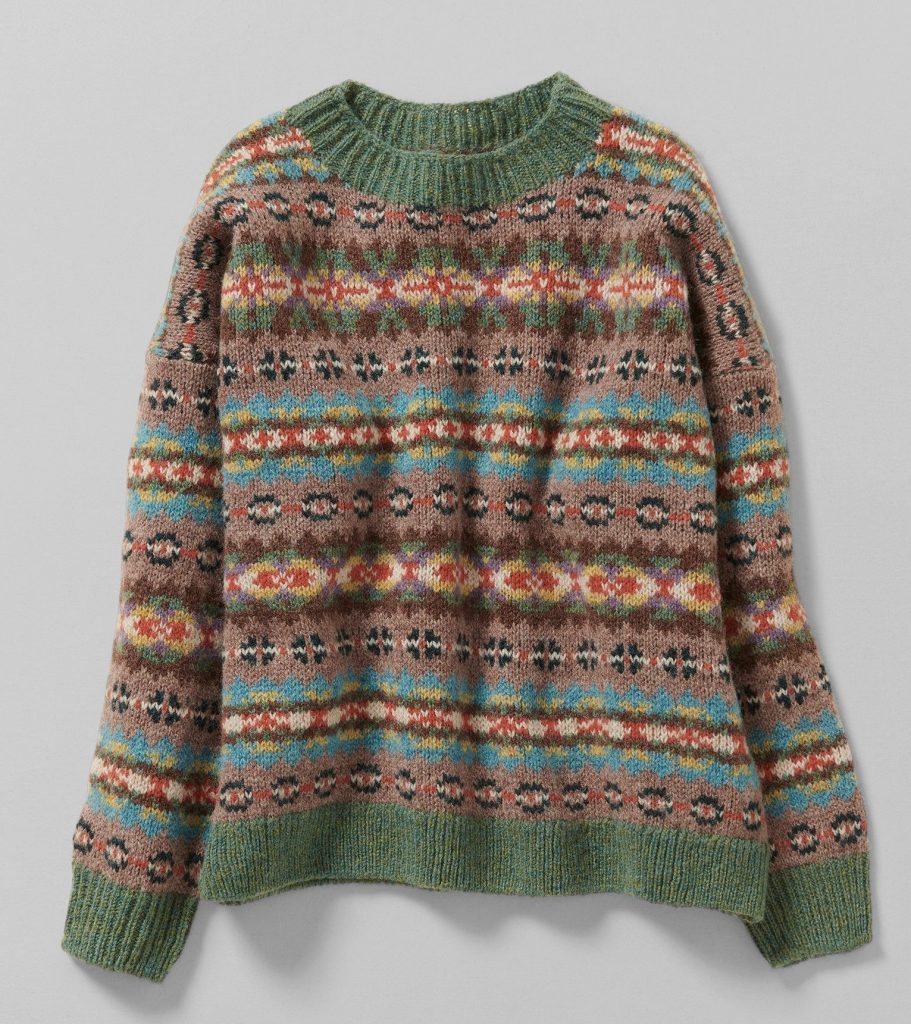
We are delighted to see the launch of this beautiful Fair Isle Shetland jumper as part of clothing company TOAST new autumn collection.
The design was inspired by a hand-knitted scarf on permanent display in Shetland Museum and Archive’s textiles gallery and has been knitted using Shetland wool from Jamieson & Smith Shetland Wool Brokers
It’s a wonderful example of how native Shetland wool and historical textiles are still so relevant and how our collections continue to inspire. We were pleased to work with TOAST to bring this design and its historical origins wider attention.

Shetland jumper, image © Toast
The donor of the original scarf said it dated from 1933. It was bought from a woman knitting by the side of the road, by a visitor to the Spiggie Hotel, a popular venue with tourists, being so close to St Ninian’s isle. We don’t know the name of the knitter but she likely made garments for sale to holiday-makers, as this would have been a lucrative trade. Knitting outside near the hotel was one way to advertise your work, besides getting some summer sun! This was a tremendous boom time for fair isle knitwear – only 10 years after the Prince of Wales popularised it for fashion, and it was worn extensively by men and women.

Shetland scarf, image © Shetland Museum and Archives
Some of the colours in the scarf may be leftovers from other fair isle garments the knitter had made. We have other scarves with a large number of interesting and unusual colours and these seem to be made to use up odds and ends of yarns. This was common practice, especially for small garments such as gloves and scarves, or one’s own children’s knitwear, and was easy to do with small-scale fair isle patterns. Like all fair isle design, there was always the use of at least one, but usually two natural colours, no matter how many dyed shades were used. This helped to ground the dyed colours and in this period fawn and moorit, combined with natural white, were the most popular neutrals. The overall colourway, soft dyed colours on a fawn background, was very much in vogue in the early 1930s and is reflected in contemporary Shetland tweed sample colourways, also in the Museum’s collection.